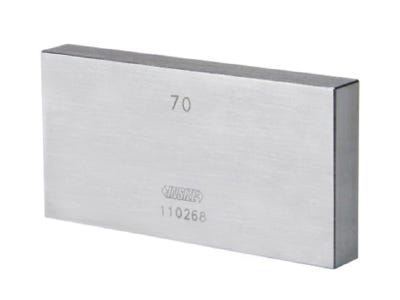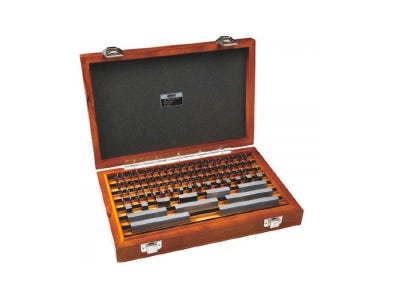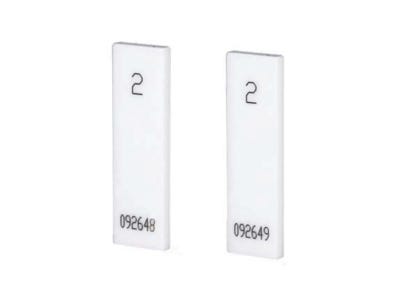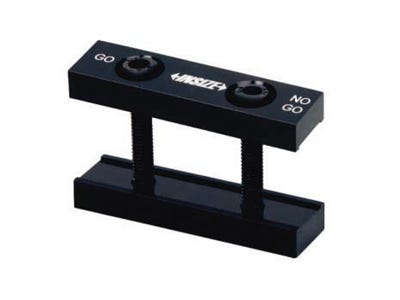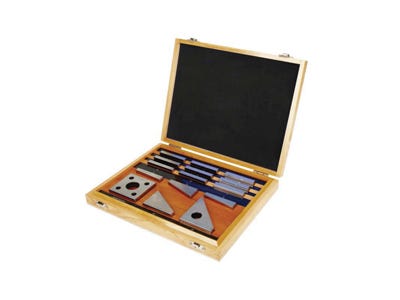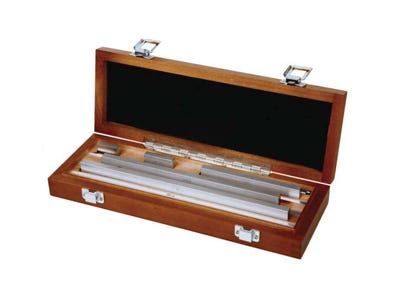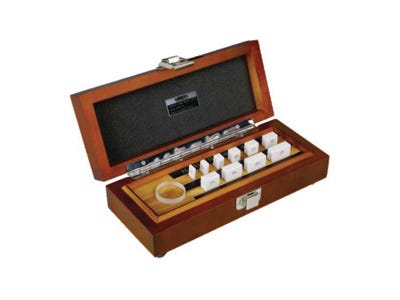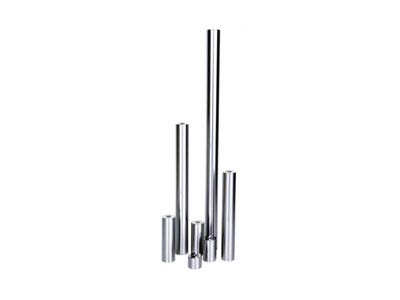Gauge Blocks
Steel, Carbide & Ceramic Slip Gauge Blocks, Wear Blocks, Angle Gauge Blocks & Inspection Gauge Blocks available from market leaders Mitutoyo & Insize.


Gauge Blocks
What are slip gauge blocks and how are they used?
Slip gauges, or gauge blocks, are inspection tools used to verify that a gap, groove or feature is to an exact measurement or if multiple gaps need to be produced to the same specification. Each slip gauge consists of a block made from a highly wear-resistant material which will have a very specific width measurement for precise measurement. Gauge blocks can be made from various materials including, from least to most hard wearing, alloy steel, carbide and ceramic. A slip stack is built up by wringing together individual gauges to build up the required measurement.
High accuracy slip gauges (grade 0) can also be used to calibrate or check certain measuring equipment like calipers or height gauges. They are used predominantly to check the error built up in measuring tools (for instance if you used 5 10mm slip gauges and a height gauge had a 1mm runout, the total built-up error would be 5mm, which is significant). Gauge blocks can also be paired with holders to create a go/no-go gauge using slightly different sized blocks.
What is the difference between steel and ceramic slip gauges?
Ceramic gauge blocks are the highest accuracy and most wear-resistant of all available slip gauges, meaning they are used where absolute precision is required. Furthermore, ceramic slip gauges are used where steel gauges cannot be used (such as in food produce, medical and aerospace industries) due to the conductivity of metals.
In most workshop applications, steel slip gauges should be sufficient. They can be supplied with accuracy of up to 3 decimal places and are supplied to both workshop (grade 2) and inspection (grades 1 and 0) standards.
What grades of slip gauge blocks are available?
Slip gauges can be supplied in a variety of grades, which will determine how accurate a gauge block will be and the extent of potential deviation in each gauge. Grade 2 is traditionally the least accurate and is to be used in workshops to check production gauges, set measuring instruments and mount tools. Grade 1 can be used in inspection rooms to check gauges, inspect high accuracy parts and set mounting instruments. Grade 0 is to be used as a basic standard in calibration laboratories by skilled inspection staff, to calibrate or set high accuracy measuring instruments, to calibrate gauge blocks of grade 1 and 2.
The grading system is determined by the accuracy of the gauge in several measurements including the limit deviation of length and tolerance for the variation in length. For instance, a 10mm slip gauge may have a limit deviation of 0.12 microns at grade 0, but 0.2 microns at grade 1 and 0.45 microns at grade 2. As higher accuracy gauges are more expensive, it is important to only use the grade of gauge that is necessary, as the difference will be negligible to general workshop use.
What types of slip gauge blocks are available?
The key differentiators within the slip gauge range are the grade and material of a block. Grade 2 is for general workshop use, whereas grade 1 is for inspection use and grade 0 for calibration use. Gauge block materials include alloy steel, carbide and ceramic. In most situations alloy steel will be sufficient, however for significant or repeated use a higher wear-resistant gauge may be required. Each slip gauge will also be made to a certain standard like ISO3650, which means the gauge is recognised industry wide.
If wear resistance is an issue, wear blocks can be placed at both sides of the gauge stack to prevent any wear to the actual gauge. These do add extra width (e.g. 2mm or 4mm) to the gauge block but will vastly increase a gauge’s tool life. Holders can also be utilised for various applications including creating a go/no-go using two slightly different sized gauges, or to check the accuracy of other measuring tools like height gauges or calipers. Height gauges can also be checked using cylindrical gauge blocks, whilst calipers by special caliper inspection gauge blocks designed specifically for checking measuring accuracy. Cylindrical slip gauges are also designed for use where rectangular blocks cannot fit.
Gauge blocks can be supplied either individually or in sets depending on whether multiple gap sizes need to be measured. Sets will contain a range of sizes in different steps (the variance between each size of gauge in the set, for example 0.01mm or 0.5mm). These sets are pre-determined however sizes can be interchanged or sets can be created from scratch and stored in a separate wooden box.
Are slip gauge blocks supplied with calibration?
Slip gauges supplied by Cutwel are supplied as standard with a manufacturer’s calibration certificate. This informs the user that each gauge has passed the manufacturer’s internal tests which verifies that each gauge falls within a given tolerance (so if a gauge is 10mm it may have a deviation of 0.0001mm). The deviation will also be informed by the grade of the gauge.
Slip gauges can be calibrated to a UKAS standard, which is the United Kingdom Accreditation Standard by which all gauges are assessed. When inspecting a slip gauge to a UKAS standard, the inspector will simply allocate a ‘Pass’ of ‘Fail’ to the gauge depending if its measurements fall into a given tolerance.
For more information about calibrating slip gauge blocks please contact Cutwel today.
Don't have an account?
Creating an account has many benefits: check out faster, keep more than one address, track orders and more.
Or
Checkout as a Guest
Place your order without creating an account for extra convenience.
